|
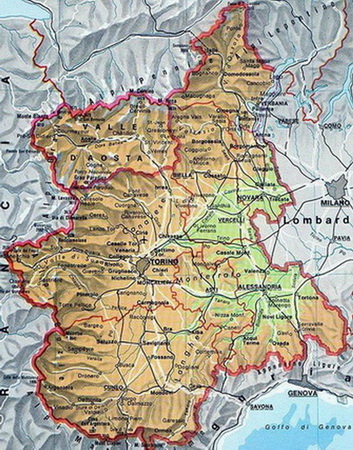 |
PIEMONTE
Piemonte
(Piedmont), literally the “foot of the mountains”
is tucked into the northwest corner of Italy, surrounded by
Alpine ranges on three sides, and is the source of the Po
river which flows through the rich farmlands of Northern Italy
into the Adriatic sea.
The
capital is Turin, seat of the old Savoy family, former Kings
of Italy, with a rich culture and history,
baroque architecture and museums.Turin is also home to much
of the Italian automotive industry, with the headquarters
of
Fiat, Lancia and Alfa Romeo as well as the world famous Juventus
football club.
The
proximity to the mountains gives the region a cooler continental
climate different from central and southern Italy, and the
maritime influence of the Mediterranean produces a wide day-night
temperature variation, known as a diurnal range. The cool
nights, foggy mornings and sunlit days are so beneficial for
Piedmont’s unique palate of wines.
|
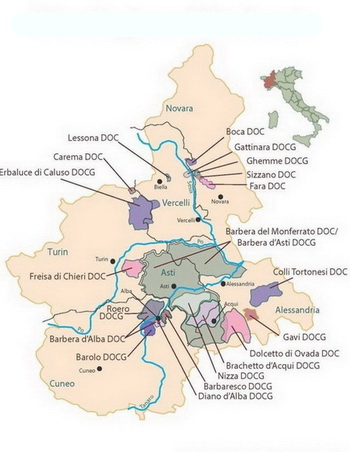 |
WINE
REGIONS OF PIEDMONT
Piedmont
has an incredible range of wines from its 50 or more autochthonous
(indigenous) grape varieties grown in many zones each with
unique altitude, soil and climatic conditions.
The
most important are classified by variety and sub-region into
42 Denominazione di origine controllata’s (DOC)
and 17 Denominazione di Origine Controllata’s e Garantita
(DOCG) in which strict rules
apply about the zone, variety, planting density and yields
as well as the aging process.
The
best known wines come from the central area of Piedmont, the
Langhe, Roero and Monferrato hills
centred on Asti and Alba although there are some other areas
gaining recognition such as the sub-alpine Gattinara
and Ghemme areas near the lakes
and the historic Colli Tortonesi
in the east.
|
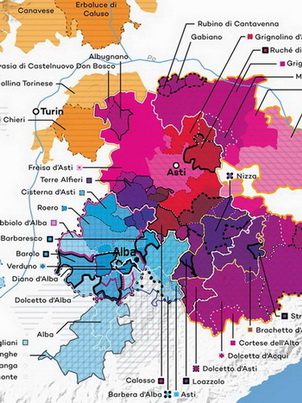 |
LANGHE,
MONFERRATO and ROERO
Piedmont
is better known for its red wines, the most famous are from
the Nebbiolo grape with the world renowned Barolo
DOCG and Barbaresco DOCG, as
well as several other DOC regions. Barbera is the most widely
grown grape and is produced in several DOCG and DOC areas,
including Barbera d’Asti
and Barbera d’Alba. There
are many other wines not well known outside of Piedmont which
are worthy of attention to wine lovers such as Ruche,
Dolcetto, Grignolino, Fresia, Bonarda to name a few.
Although
Piedmont is a big red wine country there are several delicious
whites to consider. The best known to consumers is the sweet
sparkling Asti Spumante, (now
called Asti) and it’s delightful cousin Moscato
d’Asti, fruitier, more gently sparkling and of
higher quality. For dry white wines the best known was Gavi,
however the two whites gaining recognition are Arneis
from the Roero and Timorasso
from Colli Tortonesi. The Moscato grape also excels when made
into a late harvest “passito”
wine in the right locations, the equal of Sauternes or late
harvest Rieslings. Erbaluce di Caluso,
north of Turin is normally a light dry white wine, however
some producers a sublime passito version.
Piedmont is also home to some very fine sparkling wines, the
old Asti Spumante houses also make a method traditional dry
style similar to Champagne; in 1990 the Alta
Langa consortium was established with plantings of
Pinot Noir and Chardonnay in appropriate locations and now
consists of 80 members, many of them make exquisite dry sparkling
wines at most reasonable prices.
|
FOR
MORE INFORMATION PLEASE EMAIL TO:
VILLETTAWINES@GMAIL.COM
Site Design by Erin Brewer
|
|
 |
|
|
|
|
Some of our featured winemakers
|
|
(Click to enlarge photos)
|
|
|
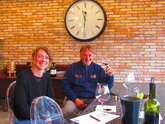 |
|
|
Edoardo Sobrino Barolo
|
|
|
|
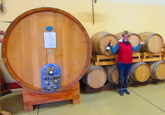 |
|
|
Elisa Testore La Colombera Tortona
|
|
|
|
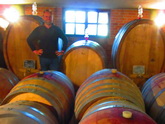 |
|
|
Fabrizio Francone Barbaresco
|
|
|
|
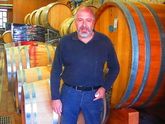 |
|
|
Gian Paolo Repetto Dethrona
|
|
|
|
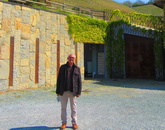 |
|
|
Paolo Berutti Alta Langa
|
|
|
|
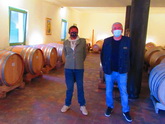 |
|
|
Giorgio Negro Barbaresco
|
|
|
|
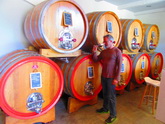 |
|
|
Enrico Vaudano Cisterna d'Asti
|
|
|
|
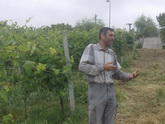 |
|
|
Andrea Oberto Erbaluna
|
|
|
|
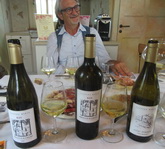 |
|
|
Domenico Tappero Merlo
|
|
|
